Hello everyone and welcome to another week of Shattered Perceptions, the series where I attempt to redefine the use of off-the-beaten-path cards in Commander through the lens of general of the week. This week we are finally returning to the supposed “normal” by discussing one potential general—Bartel Runeaxe—and trying to build a workable skeleton around it. This came in as a request over a month ago and was meant to be the topic of the article that focused on Yasova Dragonclaw. Giant tribal is a hard nut to crack for me, and I didn’t want to force it. And now the day has come.
Bartel Runeaxe
I understand why Bartel Runeaxe got requested. It’s a fairly unremarkable legendary creature that has some confusing messaging in terms of what you’re supposed to be doing with it. This is because he’s from Legends, the set that inspired Commander but was in no way designed with the thought of that format in mind. Bartel Runeaxe is in the Jund color identity, which has access to a healthy amount of ramp and beefy creatures from Green plus aggressive spells from Red and Black. That seems like a great base for Giants. But there’s another important factor we have going for us as well—basically nobody has ever seen this guy helm a deck. That is an important metagame aspect to look at, as I doubt people will know what to expect right out of the gate.
So with this mishmash of factors billowing around our possible deck, what is our goal here? To make a Giant tribal deck that can hold its own while also being fun and memorable to play. A deck comparable in power level to a preconstructed product is fine, though we can always dream bigger. If I happen to strike gold and spawn a fun deck worth iterating to true refinement, that will be cause for celebration.
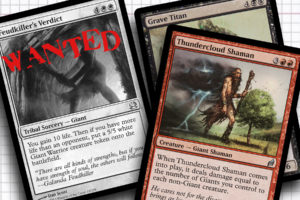
The Axe in the Road
Bartel has the creature types Giant Warrior, though you have to read the Gatherer text online to know that. Naturally the first instinct is to build towards Giant tribal as requested. But the Lorwyn block giant tribal cards are red and white. For every Giant Harbinger, Stinkdrinker Daredevil, Sunrise Sovereign, or Borderland Behemoth, cards like Feudkiller’s Verdict or Kalemne, Disciple of Iroas get left behind.
I realized that I was approaching the deck from the wrong angle. Searching Gatherer for “Giant” in the type line or rules text to find powerful cards such as Thundercloud Shaman or Grave Titan is easy but struggles to address the red/white divide. But what if there are “Giant” cards that don’t use that word? Jund is the shard of monsters, right?
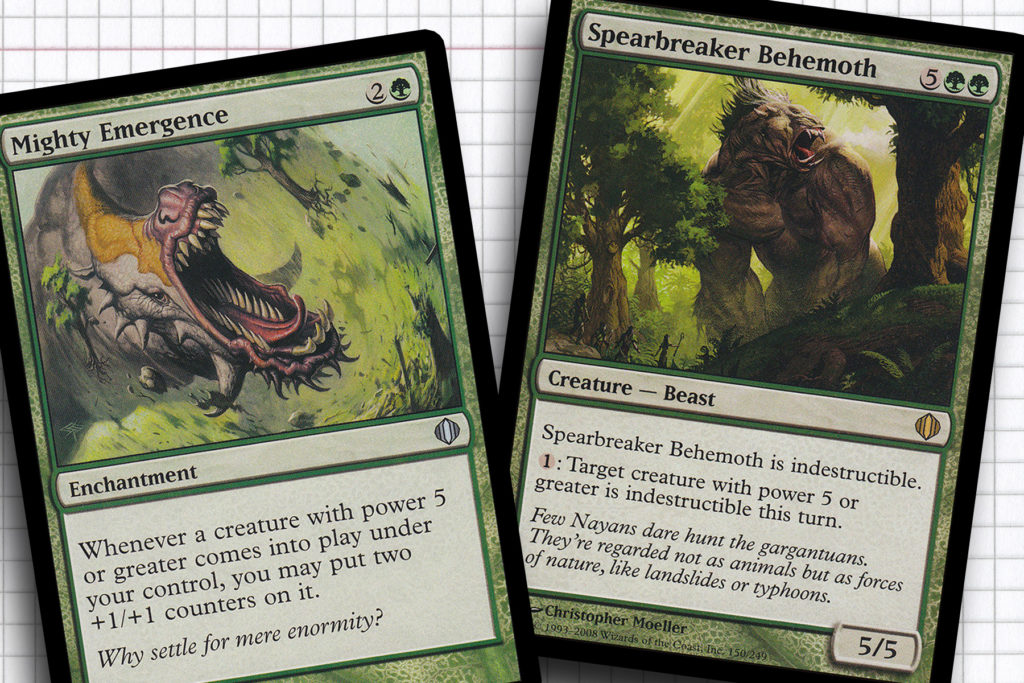
I’ve Got the Power
My search through Giant tribal cards proved to still be helpful, as looking for something akin to Kalemne focused on some specific words. “Power 5 or greater” led me to the Naya shard of Shards of Alara block, where our target deck has support in the form of Spellbreaker Behemoth, Mighty Emergence, Beacon Behemoth, and Spearbreaker Behemoth. Most of the actual Giants that would be begging to be in this deck cross this threshold, at least with an Adaptive Automaton or Metallic Mimic in play.
At one point or another all of these cards were on my radar as I was building my Eldrazi Shattergang Brothers deck, some not making the cut or being trimmed off as deck slots were required during Oath of the Gatewatch or Eldritch Moon. Nonetheless, in this deck I believe they provide a solid backbone. Giants can interact favorably with the above listed cards—along with Drumhunter, Bloodthorn Taunter, and Godtracker of Jund and more—but what I like about this wealth of choices is that the deck should be able to succeed even through hate like Engineered Plague or Tsabo’s Decree. Chalk another one up for diversity!
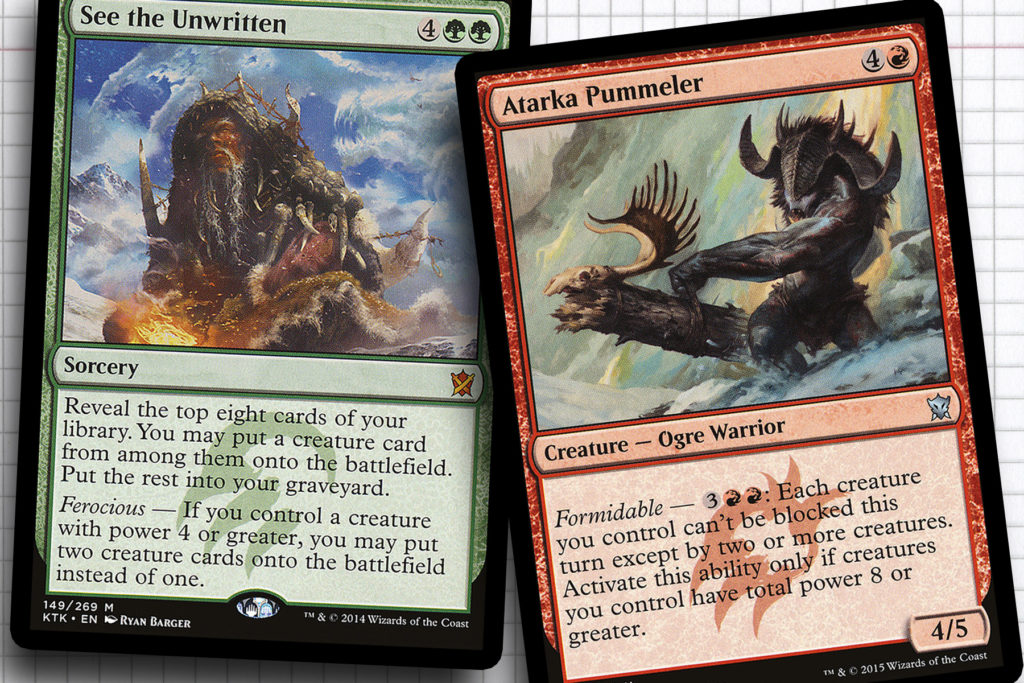
Tarkir Flavored Fun
The unnamed Naya mechanic was not Wizards’ last dip into the well for power-based mechanics. Khans of Tarkir block offered the once-great Temur and the now-existing Atarka clan who wield the ferocious and formidable mechanics. These are similar power-dependent clauses that play well with what we’re already trying to accomplish. The ferocious/formidable cards are generally nothing so profound that they are required for the build of this deck, but I believe they add some uniqueness to set us apart. Surrak, the Hunt Caller works well as an on-theme copy of Fervor or Anger. Stampeding Elk Herd can be our third copy of trample granting along with Primal Rage and Brawn. And lastly, Atarka Pummeler is like if Goblin War Drums became a marching drumline.
Some nice spells come along with this package. Savage Punch kills things, See the Unwritten does the whole free-expensive-stuff thing perfectly for our strategy, Temur Battle Rage does a lot of damage when we need that, and Shamanic Revelation keeps the fun going.
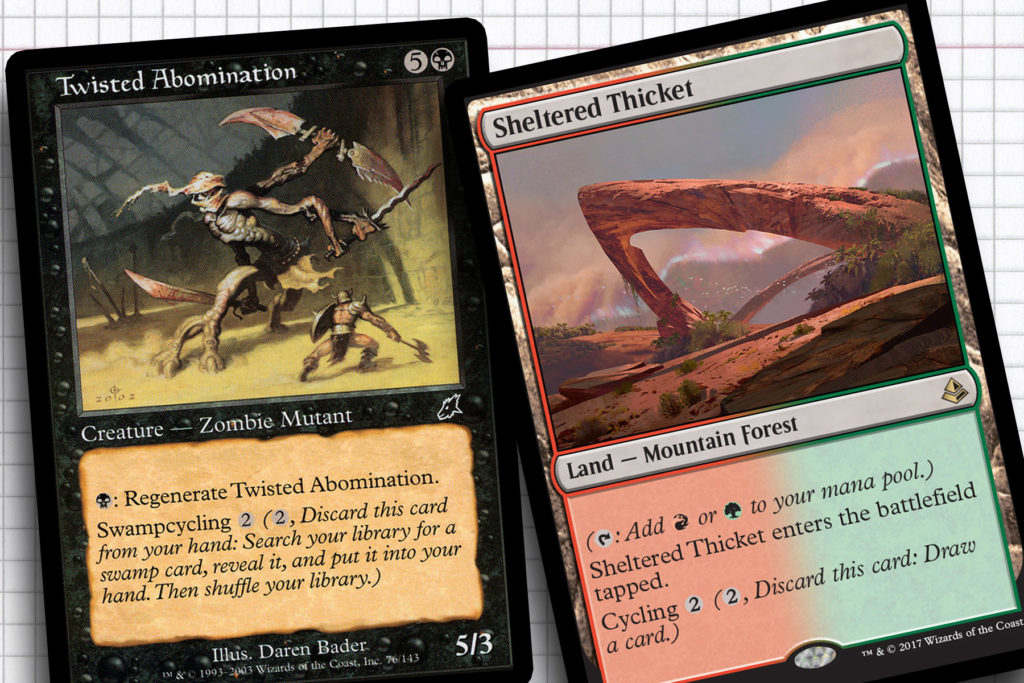
Reaching Stage Two
All of this talk of flavorful inclusions and generating value off of beefy creatures is all well and good, but I wouldn’t want to lay out this plan if I didn’t supply a route to achieving a “Stage 2” and “Stage 3” board state.
While we Commander players may not think or play as aggressively as competitive players, Stage Theory is an important concept to grasp as part of our growth as a player. Briefly, the idea of “stages” of the game came to us from Mike Flores’ 2012 article Stage-Skipping Standard. Here’s a summary of each stage for our purposes:
Stage One—The point where you’re mana screwed and can’t really play the game. In formats like Standard or Modern, you’re looking at having about two lands to escape Stage One. In Commander, I would estimate you want at least three lands and access to your colors.
Stage Two—This is where most of the game takes place, and you make most of your choices here. You’re playing Magic and can expect to draw useful cards. Mike believes this is where Magic is at its best. I agree.
Stage Three—The point where a player or players are dictating the direction of the game and only a handful of effects can counteract their inevitable victory. In Commander, this could be a player above 40 life resolving Felidar Sovereign.
With the theory aside, I want to supply you with my picks to ensure you can reach Stage Two and really get to the fun parts of the game. If you are card-rich, fetch out your Stomping Ground, Overgrown Tomb, and Blood Crypt with Farseek and Crop Rotation. For everyone on a budget, use Skyshroud Claim, Nature’s Lore, and Gaea’s Bounty to grab Cinder Glade and Sheltered Thicket. The basic landcycling cards like Wirewood Guardian and Twisted Abomination both work well to move us through Stage One, while working with our big power plan once we get to Stage Two.
Also, if you want to mess with your opponents’ stage development, Marshdrinker Giant is the Giant for the job.
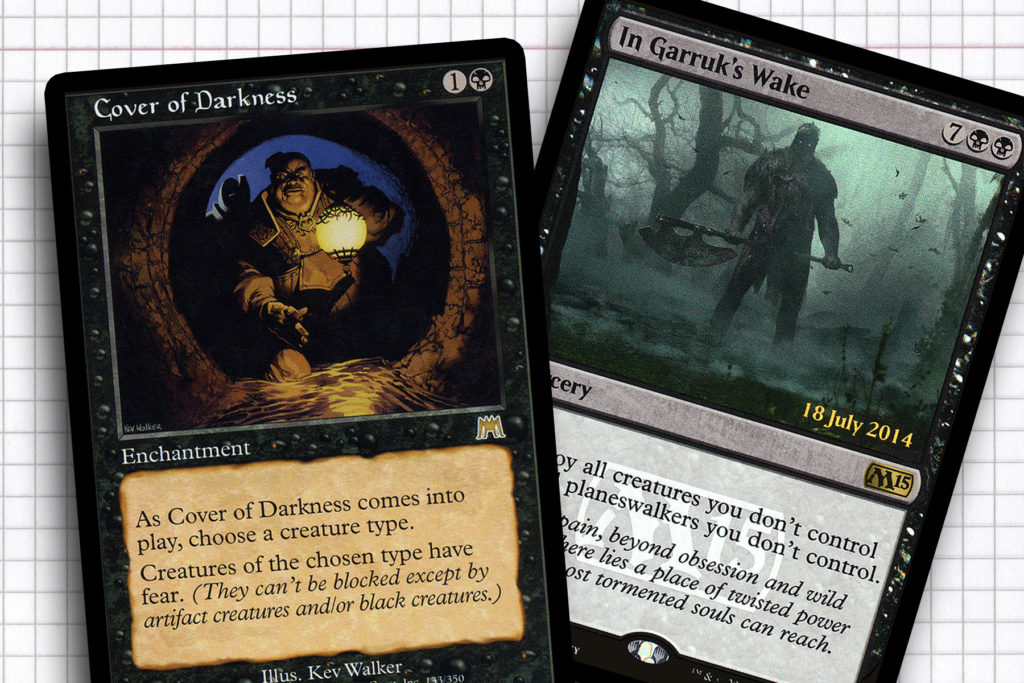
We Are Become Death
Black has really been missing from this article. It’s not uncommon for some of the color identity of a deck to fall by the wayside and in this case our deck as I have currently outlined is mostly Red/Green. There’s no doubt that your removal package can come out of monoblack if not Rakdos, but I would also want to look at our options in terms of choice evasion spells like Cover of Darkness, Intimidation, Profane Command, and Dirge of Dread. I also wouldn’t be afraid to venture outside of the tribe for creatures like Broodmate Dragon or Lord of Extinction as they are built tough. Top everything off by tossing in a Plague Wind or In Garruk’s Wake and have yourself a great game of Magic: the Gathering.
So what is the take away here? Hopefully my suggestions for Giant tribal felt like something more than Jund Good Stuff. I believe there is a great deck waiting to be uncovered here. Hopefully I have given Brian the right taste to compel him to refine this deck. Truthfully, how you ramp and what you ramp to may depend on budget or play style, but overall I think some creativity can make this a viable deck. Track me down on Twitter to give your thoughts—I love feedback, it’s the lifeblood of content creation. Thank you for your time and have a good week.
Ryan Sainio is a Graphic Designer who writes about EDH, the story of Magic and the EDH community in his down time. He has been playing Magic: The Gathering since 7th Edition in 2002 and values flavorful and fun gameplay over competitively optimized decks.

